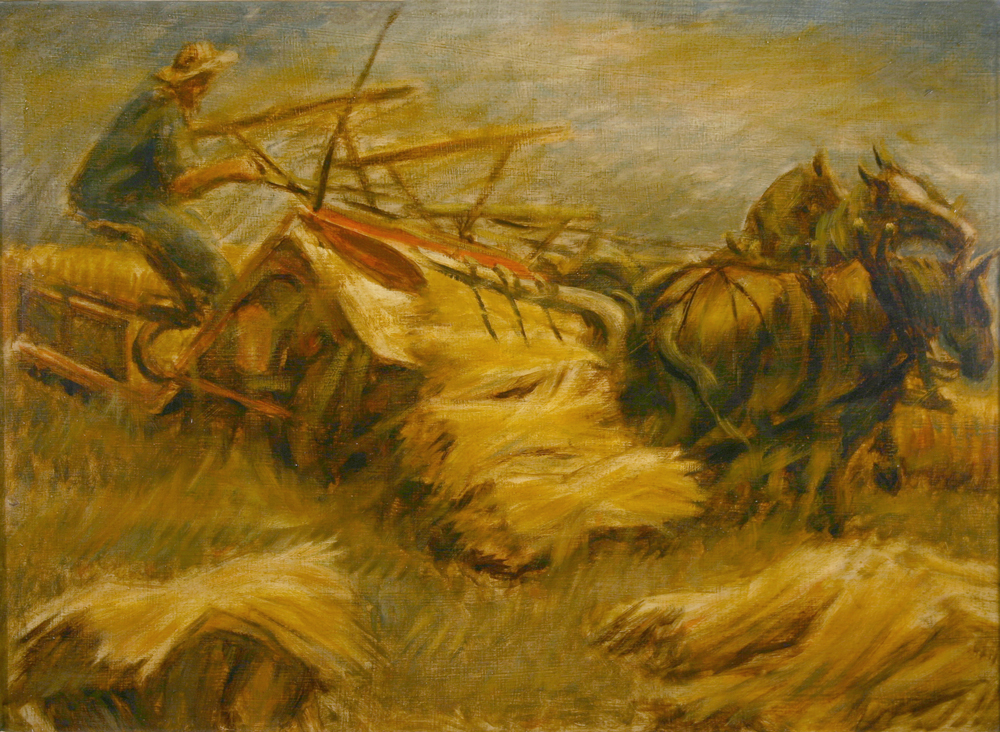This major retrospective seeks to reintroduce Charles Thwaites (1904-2002), a Wisconsin artist who responded to changing artistic trends in the mid-twentieth century, to a new audience. Most of the 43 paintings, drawings, and prints in this exhibition are drawn from the collection of the Museum of Wisconsin Art (MOWA). The Dubuque Museum of Art proudly includes a portrait from Thwaites’ Taos period, donated to the museum from the artist and recently restored thanks to donations to the museum’s Conservation Corner.
In 1926 Thwaites abandoned engineering studies for art and in the following two decades he became one of the leading realist painters in America with ninety exhibitions at prestigious venues. In Wisconsin, he was the go-to artist for official portraits, and completed four post office murals under the auspices of the WPA. Six of the mural studies are included in this exhibition. He lived in Dubuque briefly in 1928, serving as director of the Dubuque Little Institute and teaching at the Dubuque Art Association while finishing his art degree.
In 1954, Thwaites moved to New Mexico. The move marked a fresh chapter and a significant artistic shift, but meant his reputation in Wisconsin faded, particularly as the realist style he had mastered was falling out of favor. Stylistically, his realism slowly transitioned to abstraction and he became a member of the “Taos Moderns” group.
The 1960s and 1970s saw Thwaites produce mostly abstract work but by the early 1980s he ceased painting. When he died in 2002, his name had faded from both the Southwestern and Wisconsin art scenes rendering him a forgotten man in both New Mexico and his home state. The journey Charles Thwaites undertook over the course of his life was not just one of physically relocating from one state to another, but really from one culture to another and one artistic style to another. Graeme Reid, MOWA’s Director of Collections and Exhibitions (and curator of this exhibition) has long championed Thwaites’ painting. “It’s exceptionally rare for any artist to be so successful in one style and make a smooth, almost effortless, transition to another. Whether it was realism or abstraction, Charles Thwaites could do both with confidence and originality.”
